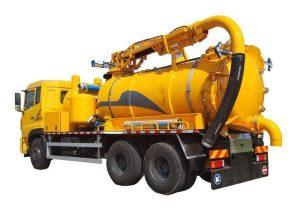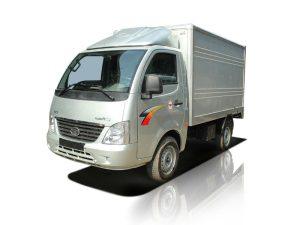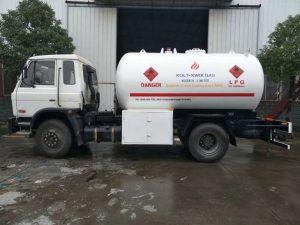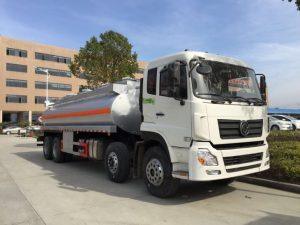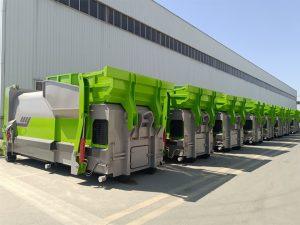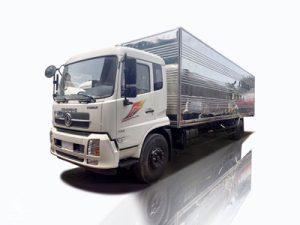Monday to Saturday - 8:00 -17:30
The Capacity of Truck Fuel Tanks: Everything You Need to Know
Introduction
When it comes to operating a truck, understanding the capacity of its fuel tank is crucial for both efficiency and cost-effectiveness. The fuel tank’s capacity determines how far the truck can travel on a single fill-up, impacts fueling costs, and affects operational planning. This article dives into everything you need to know about truck fuel tank capacities, including types, sizes, and factors that influence their efficiency. Whether you’re a driver, fleet manager, or truck enthusiast, grasping the details of truck fuel tanks will help you make informed decisions.
Understanding Truck Fuel Tank Capacity
What is Truck Fuel Tank Capacity?
Truck fuel tank capacity refers to the volume of fuel that a truck’s tank can hold, typically measured in gallons or liters. This capacity significantly influences the truck’s range and productivity.
Why is Fuel Tank Capacity Important?
- Range: A larger fuel tank allows for longer trips without the need to refuel.
- Cost Efficiency: Understanding fuel capacity helps in budgeting fuel expenses and planning trips.
- Operational Planning: Knowing the fuel capacity aids in logistics and scheduling.
Types of Truck Fuel Tanks
Standard Fuel Tanks
Standard fuel tanks are the most commonly used tanks in commercial trucks, with capacities typically ranging from 50 to 150 gallons (189 to 568 liters).
Auxiliary Fuel Tanks
These tanks can be added to extend the overall fuel capacity of a truck. They provide more flexibility and range during long hauls.
Specialized Fuel Tanks
Some trucks are equipped with specialized tanks for different types of fuel, such as diesel reserves for additional power or biodiesel options for eco-friendly operations.
Average Fuel Tank Capacities by Truck Type
Light-Duty Trucks
Light-duty trucks, such as pickups, often have fuel tanks ranging from 20 to 30 gallons (76 to 113 liters).
Medium-Duty Trucks
Medium-duty trucks, typically used for delivery and public services, feature fuel tank capacities from 40 to 80 gallons (151 to 303 liters).
Heavy-Duty Trucks
Heavy-duty trucks, commonly used in long-haul transportation, may have fuel tanks ranging from 100 to 300 gallons (378 to 1135 liters).
| Truck Type | Average Fuel Tank Capacity (Gallons) |
|---|---|
| Light-Duty | 20 – 30 |
| Medium-Duty | 40 – 80 |
| Heavy-Duty | 100 – 300 |
Factors Influencing Fuel Tank Capacity
Truck Design
The design of a truck directly affects the size and placement of its fuel tank. Manufacturers often optimize fuel tank placements to ensure a balanced vehicle.
Regulatory Standards
Government regulations on emissions and safety may dictate tank sizes, especially in specific industries such as transportation and logistics.
Usage Requirements
The intended use of a truck—whether for local deliveries or long-haul freight—can determine the fuel tank size. Trucks used for longer distances require larger fuel tanks.
Maximizing Fuel Efficiency
Regular Maintenance
Maintaining a truck’s fuel system is crucial for efficiency. Regularly check for leaks, replace filters, and ensure proper tire pressure to enhance fuel economy.
Driving Habits
Adopting economical driving habits—such as gradual acceleration, maintaining cruising speeds, and avoiding excessive idling—can improve fuel efficiency.
Examples of Common Truck Models and Their Fuel Capacities
Ford F-Series
The Ford F-150 typically has a fuel tank capacity of around 23 to 36 gallons (87 to 136 liters), depending on the model year and trim level.
Freightliner Cascadia
This heavy-duty truck offers fuel tank options ranging from 100 to 150 gallons (378 to 568 liters), catering to long-haul trucking needs.
Comparing Fuel Capacities Across Truck Brands
Table: Comparison of Various Truck Brands
| Truck Brand | Model | Fuel Tank Capacity (Gallons) |
|---|---|---|
| Ford | F-150 | 23 – 36 |
| Dodge | Ram 2500 | 31 – 38 |
| Freightliner | Cascadia | 100 – 150 |
| Peterbilt | 579 | 100 – 150 |
Regulatory Considerations
Environmental Regulations
Many states have regulations regarding emissions and fuel types. It’s essential for truck owners and operators to comply with local laws to avoid fines and legal issues.
Weight Regulations
Fuel capacity also affects the overall weight of a truck, impacting load limits. Understanding weight regulations can help in planning loads effectively.
Frequently Asked Questions (FAQs)
What are the typical capacities of fuel tanks in trucks?
Fuel tank capacities vary by truck type: light-duty trucks usually range from 20 to 30 gallons, medium-duty trucks from 40 to 80 gallons, and heavy-duty trucks from 100 to 300 gallons.
Does a bigger fuel tank mean longer travel distances?
Generally, yes. A larger fuel tank allows a truck to travel further before needing to refuel, assuming fuel efficiency is maintained.
How can I improve my truck’s fuel efficiency?
Improving fuel efficiency can be achieved by regular maintenance, adopting better driving habits, and ensuring the vehicle is as lightweight as possible.
Are auxiliary fuel tanks worth the investment?
Auxiliary fuel tanks can be a smart investment for long-haul drivers, as they provide more range and can minimize the number of fueling stops.
What is the impact of using different fuel types on tank capacity?
Different fuel types may have different characteristics affecting tank capacity and efficiency. For instance, diesel fuel typically offers better mileage compared to gasoline.
What should I consider when purchasing a truck based on fuel tank capacity?
Consider your typical travel distances, load requirements, and budget for fuel expenses when choosing a truck with appropriate fuel tank capacity.


